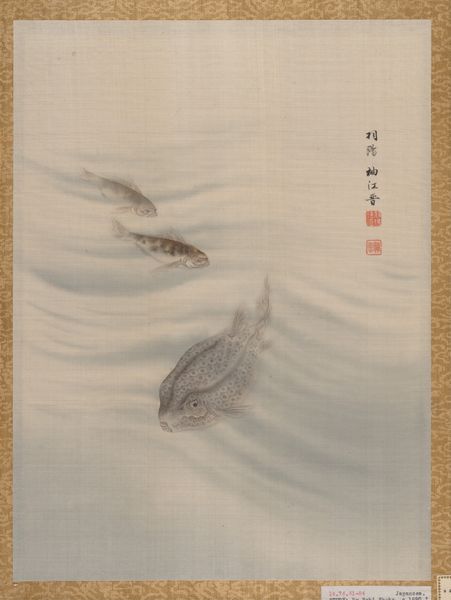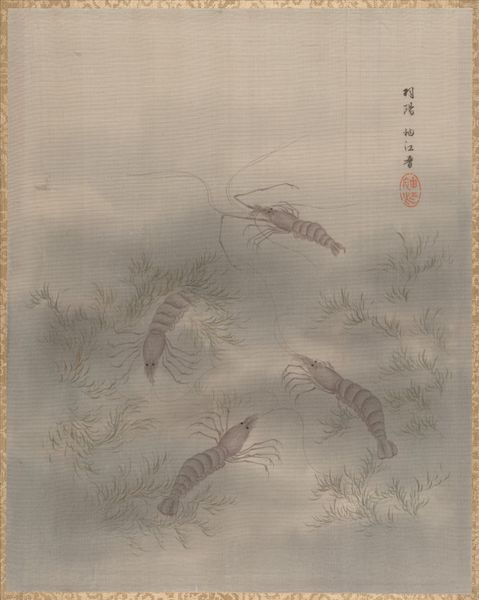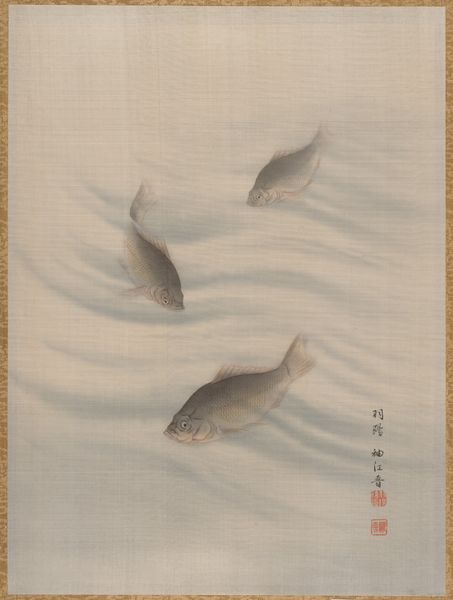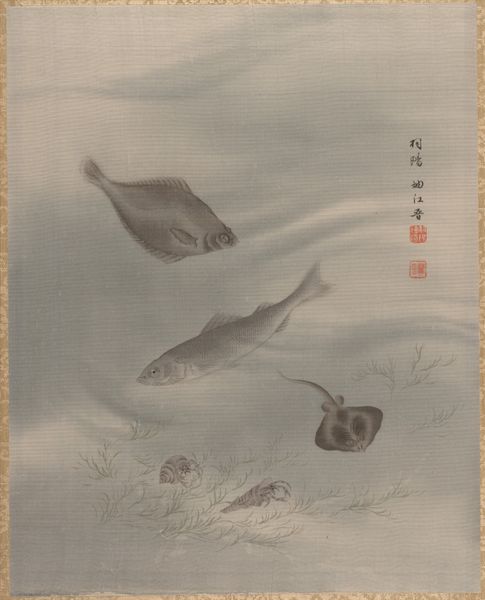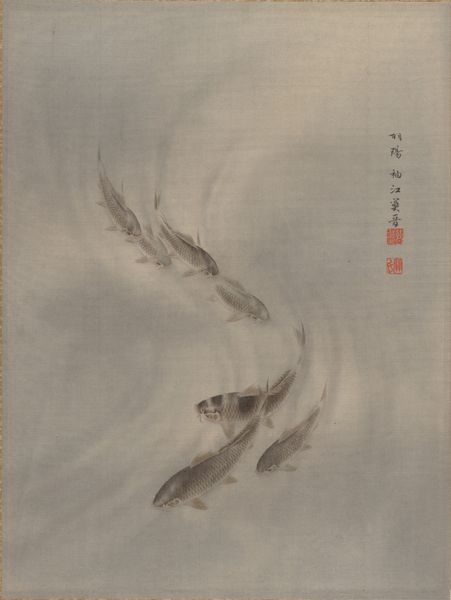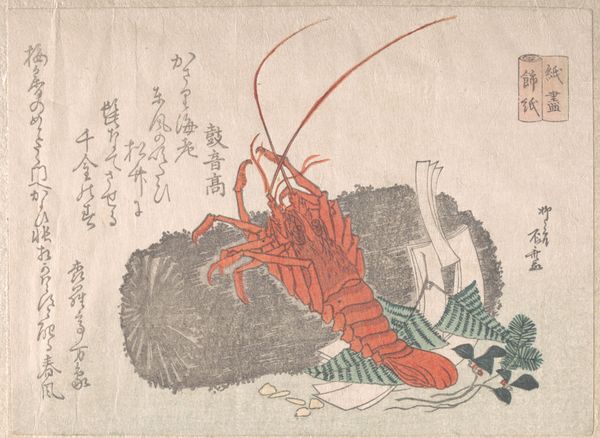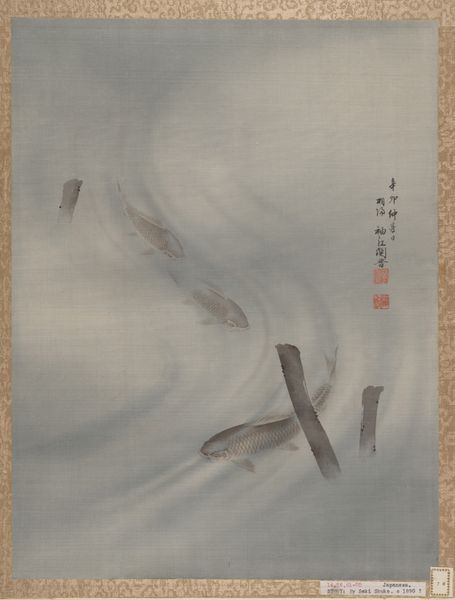
Dimensions: 14 1/4 x 10 5/8 in. (36.2 x 27.0 cm)
Copyright: Public Domain
Editor: Here we have Seki Shūko's "Bottom of the Sea Showing Cray Fish," likely created between 1890 and 1892, using watercolor. There's a serene calmness about this work. The limited color palette and soft rendering give it a dreamy quality. I am fascinated by this underwater snapshot...what are your impressions of this delicate scene? Curator: Oh, it’s utterly captivating, isn't it? Like peering into a hidden world through a veil. This piece speaks to the Japanese artistic tradition of capturing the essence of nature. It isn't a hyper-realistic depiction, but more a feeling. Look at the rendering of the water – more implied than defined. Does it evoke a certain mood for you? Editor: Definitely. The haziness makes it feel quiet and still, almost like a memory. The crayfish and fish appear suspended in time. Is that a common element in Asian art of this period? Curator: Precisely! Time becomes fluid, almost irrelevant. Shūko invites us to contemplate not just *what* is there, but the very nature of *being* there. And notice the space around the figures; it’s just as important as the figures themselves. It allows the eye to wander, to complete the story. Like a haiku – suggestive rather than exhaustive. Do you think the scale enhances or detracts from that sense of intimacy? Editor: It does enhance the feeling! The work's miniature quality seems to pull us into a private and reflective space. I would expect a vast canvas of an ocean but it's almost a miniature that wants me to pay close attention to a hidden universe. Curator: I concur! There is an introspective gaze here, like one's own internal ocean is captured by an external gaze. This dialogue itself is very exciting! Editor: This really shifted my perception. I went from just "seeing" a watercolor of marine life to really considering the deeper philosophy and the role of the viewer.
Comments
No comments
Be the first to comment and join the conversation on the ultimate creative platform.
